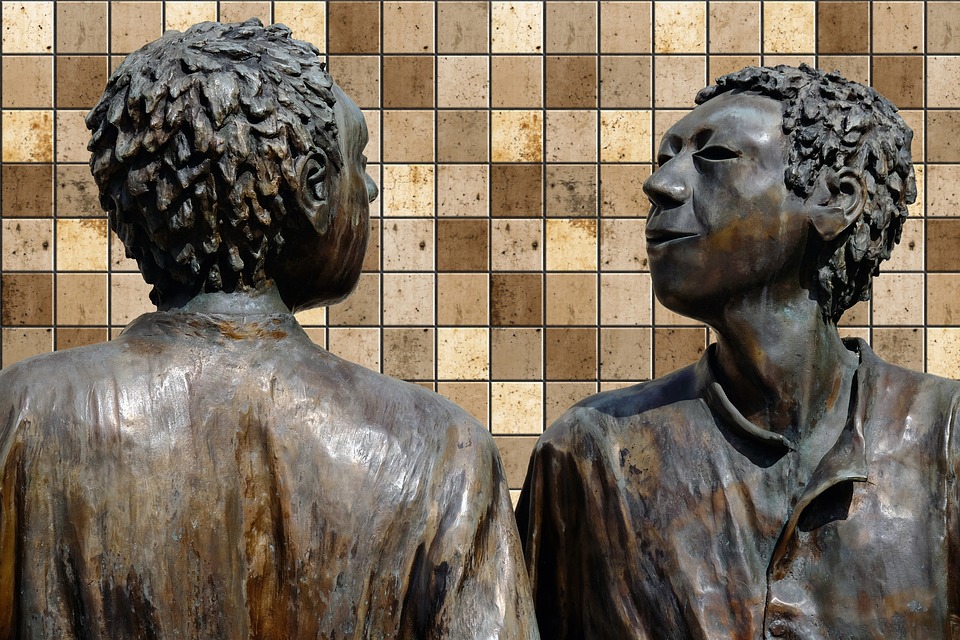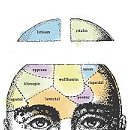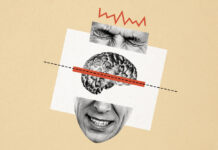A recent paper, authored by Dr. José Manual Martinez Rodriguez at the University of Valladolid in Spain, makes an argument for incorporating relational methods in psychotherapy. Through studying childhood development, scholars have arrived at the idea that psychotherapy interventions can be informed by the intersubjective dynamics observed in early childhood to facilitate the development of healthy relational patterns and a strong sense of self.
“My work with children and adolescents with severe problems in communicating and engaging in reciprocal social interaction has led me to focus on the use of relational methods to help them improve their awareness of inner needs, urges, thoughts and feelings, and their consideration of other people needs,” writes Rodriguez.

In this paper, Rodriguez reviews the work of theorists Meltzoff, Moore, Trevarthen, Stern, and Rizzolatti. Known for their work on intersubjectivity, these theorists connect the relational methods of Integrative Psychotherapy to the development of healthy aspects of self in relationships. When translating these approaches into therapy practice, some stress the presence of an “involved other,” the therapist, who is resonating with client experiences through “self-experience,” and engaging in an inquiry of the other’s mind.
In other words, “an intersubjective approach requires the therapist to be aware of his/her own experience and the way this influences what is happening in the therapeutic relationship.” When guided by this approach, the client grows able to move past early relational failures, and the subsequent disruptions caused by these failures, to develop healthier aspects of interpersonal relationships.
Meltzoff and Moore are highlighted for their emphasis on the “involved other.” In psychotherapy, the quality of the relationship between the therapist and the client is regarded as the primary therapeutic tool. The concept of the “involved other,” as attentive to and imitative of one’s inner world builds upon the centrality of the psychotherapy relationship.
Research underscoring the innate ability of humans to imitate the expressions and emotions of other humans is used as support for the importance of the “involved other.” This ability to mimic, Rodriguez cites, is possible only 42 minutes after being born. As another person’s affect is recognized and mirrored back to them, their sense of self begins to form. To this end, psychotherapists’ understanding of mirroring and imitation carry with it significant implications for the healthy development of client self in a relational context and the client-therapist relationship.
Rodriguez additionally calls attention to research conducted by Threvarthen and Rizzolatti which explores the topic of resonating with other’s experience through “self-experience.” Similar to the concept of the “involved other,” Threvarthen’s research describes individual’s innate “conversational mind,” or, support toward the idea that humans are social beings “in search of other human beings willing to participate in reciprocal imitation and the mutual regulation of life activities.”
Being a participant in a relationship that feels attuned to one’s experience can facilitate one’s learning to regulate emotions or internal states. Psychotherapy, then, becomes an opportunity to create a new attachment relationship through a process of restricting implicit memories of early relational attachments into the ability to regulate emotions successfully, Rodriguez writes.
In this way, Integrative Therapists emphasize implicit memories and their influence on how one comes to organize and structure themselves within relationships. This means paying attention not just to the language and content in-sessions, but to nonverbal cues such as body resonance, tone of voice, and sensorial channels.
“In psychotherapy, we may engage in a kind of dialogue without words where movements, tone of voice, modulation, sitting next to the client, and/or staring, become a kind of dialogue without words, serving an important intersubjective and attachment function. This dialogue must be congruent with our words. In some cases, words are not needed to help clients to increase their intersubjective awareness and to get in touch with inner relational needs, especially the relational needs of security, validation, self-definition and initiation by another.”
Attunement can vary, however, from the “developmental attunement,” in which therapists coordinate interventions of voice and movement to the client’s, to “rhythmic attunement,” in which the therapist attempts to sync physiological and emotional rhythm with the client. There is also “cognitive attunement,” or the understanding of the client’s way of processing and building thoughts. All provide a secure way to validate emotion regulation in the context of a therapeutic relationship.
“Therefore, intersubjectivity plays an important role both in upbringing and psychotherapy. We can say that we are born ready to link to the other through the intersubjective circuits of our brain. Several neurobiological and neuroimaging studies show that the essence of the brain is deeply intersubjective,” writes Rodriguez, who goes on to describe on mirror neurons and their role in human relationships.
The research on human behavior and the theories on attunement combine to inform a therapy practice that values attunement to the client, which is noted as crucial in treating cases featuring severe relational trauma, dissociative experiences, physical and sexual abuse, and suicidal risk.
Finally, Stern’s work on the process of inquiry about the other’s mind is covered as a way to help clients acquire a sense of their mind as well as the mind of others. In therapy practice, this involves the therapist’s stepping out of an interpretative role and assuming a stance of curiosity, interest, and respect toward the client’s experience.
The function of inquiry is described by theorists as a way to help expand their awareness. In psychotherapy, then, the therapist would seek to go beyond “knowing” the client to a place of continually inquiring through dialogue that facilitates awareness for both parties. Rodriguez calls inquiry an “essential intervention” to facilitate self-understanding.
“Through the process of inquiry, they receive a mirroring of their own mind and of themselves as agents of thoughts, feelings, desires, needs, wants and expectations. For some clients, inquiry may be a unifying mirroring experience, as experienced through the ongoing genuine interest of the therapist who strives to understand him/her through an exploration of affective, cognitive, physical and behavioral experiences.”
Just as research finds that infants, between nine and twelve months, discover that they have a mind, that others have a mind, and that internal experience can be shared, inquiry as a process serves in the building of a representation of self and other.
In closing, Rodriguez notes the powerful methods of Integrative Psychotherapy including acknowledgment, validation, normalization, and presence, and their healing potential.
“The subset of methods related to the process of inquiry in Integrative Psychotherapy, put into practice the need to understand the thoughts, feelings, behaviors and body reactions of the client as coming from a different mind. Relational methods as a whole can be seen as a guide to intersubjective treatment, and are especially useful in helping clients suffering from early relational failures that have affected their intersubjective relating.”
****
Rodriguez, J. M. M. (2018). Relational Methods and Theories of Intersubjectivity. International Journal of Integrative Psychotherapy, 8, 1-15. (Link)















This seems like a lot of very complex language to explain a simple phenomenon. I can’t imagine anyone trying to follow these “directions” and ending up doing anything helpful.
“… this involves the therapist’s stepping out of an interpretative role and assuming a stance of curiosity, interest, and respect toward the client’s experience.”
This seems very, very basic and is essentially ALL I have done in therapy sessions of whatever sort – be interested and respectful, seek to understand the client’s viewpoint, and try to help him/her obtain some kind of perspective on his/her own process. But it’s not complex at all. It involves being present and NOT thinking about all these theories and strategies and rules that get in between the client and the person trying to help them.
This also (properly) suggests violating the idea that a therapist/helper must remain “objective” by not getting “emotionally involved” with the client. To the contrary, emotional involvement is the only thing that makes it possible to know what to say or ask! And it enables the client to sense that you actually care about what they’re saying. Because you DO actually care! I defy anyone to truly care about another person without some level of emotional involvement. All the body language, nonverbal cues, etc. that the article talks about are readily available to someone who is paying attention and not trying to “accomplish something” with the client, but instead is just trying to understand the client’s worldview and create a safe environment to communicate together.
Report comment
Agreed Steve. Compelling article.
Report comment
“… this involves the therapist’s stepping out of an interpretative role and assuming a stance of curiosity, interest, and respect toward the client’s experience.” This is basically the opposite of what the DSM believing psychologists have been doing for decades.
The DSM believing therapists are so obsessed with picking the “correct diagnosis” that they have zero curiosity, interest or respect toward the client’s experience or real life concerns – they’re only “thinking about all these [DSM] theories and strategies and rules that get in between the client and the person trying to help them.”
Then once the diagnosis is made, it’s all about gas lighting (lying to the client claiming their real life concerns are “irrelevant to reality” while trying to convince the client and their family that the “diagnosis” is all that matters, and that it is a “lifelong incurable genetic mental illness”). Then the DMS deluded therapists completely depersonalize the client by claiming the client is actually a “disease” (i.e. a “schizophrenic” et al). And finally the DSM deluded therapists, in conjunction with the psychiatrists, make the client ungodly ill with the psychiatric drugs, as opposed to actually helping the client with their real life concerns.
What’s the likelihood the DSM deluded therapists can change their ways, and automatically start doing the opposite of what they’ve been doing for decades? Based upon the history of the psychiatric industry, I’d say it’s highly likely the “mental health professionals” will choose to commit mass genocide of their clients (which they are already doing in the USA today) rather than confessing to the scientific invalidity of their DSM belief system and confessing to the malpractice they’ve committed.
The “mental health professionals” brought us mass genocide in Nazi Germany and Bolshevik led Russia already, why should we think they will behave differently in the USA? And they are not behaving differently, the DSM was declared invalid in 2013, but the “mental health professionals” are still using this invalid “bible,” they’re refusing to change their ways once again.
Report comment
I prefer the term counseling to therapy. Steve is right. The role is one of empathy rather than scientific detachment. A good counselor is an educator, not a medical specialist. However intimate friendships outside the office and romances are bad ideas as well as unethical/illegal since they ruin the proper relationship of counselor and counselee.
I am not against counseling–between consenting adults. I think Szazs said that. Forcing “counseling” on an unwilling person is emotional abuse no matter how kind your intentions. Glasser got around that by counseling family members on how they could change their own behaviors to help struggling adult kids or partners. Imagine that!
Report comment
Glasser was a freaking genius, but of course was marginalized by his peers. The adults actually taking responsibility for altering the family dynamics? That’s crazy talk!
Report comment
I think there’s far too much potential for abuse here if the “method” is even slightly misinterpreted. I can imagine the disasters it would lead to. I know this is not the intent. I have experienced therapy disasters first hand and trust me, no one wants to go through that on the receiving end.
Report comment